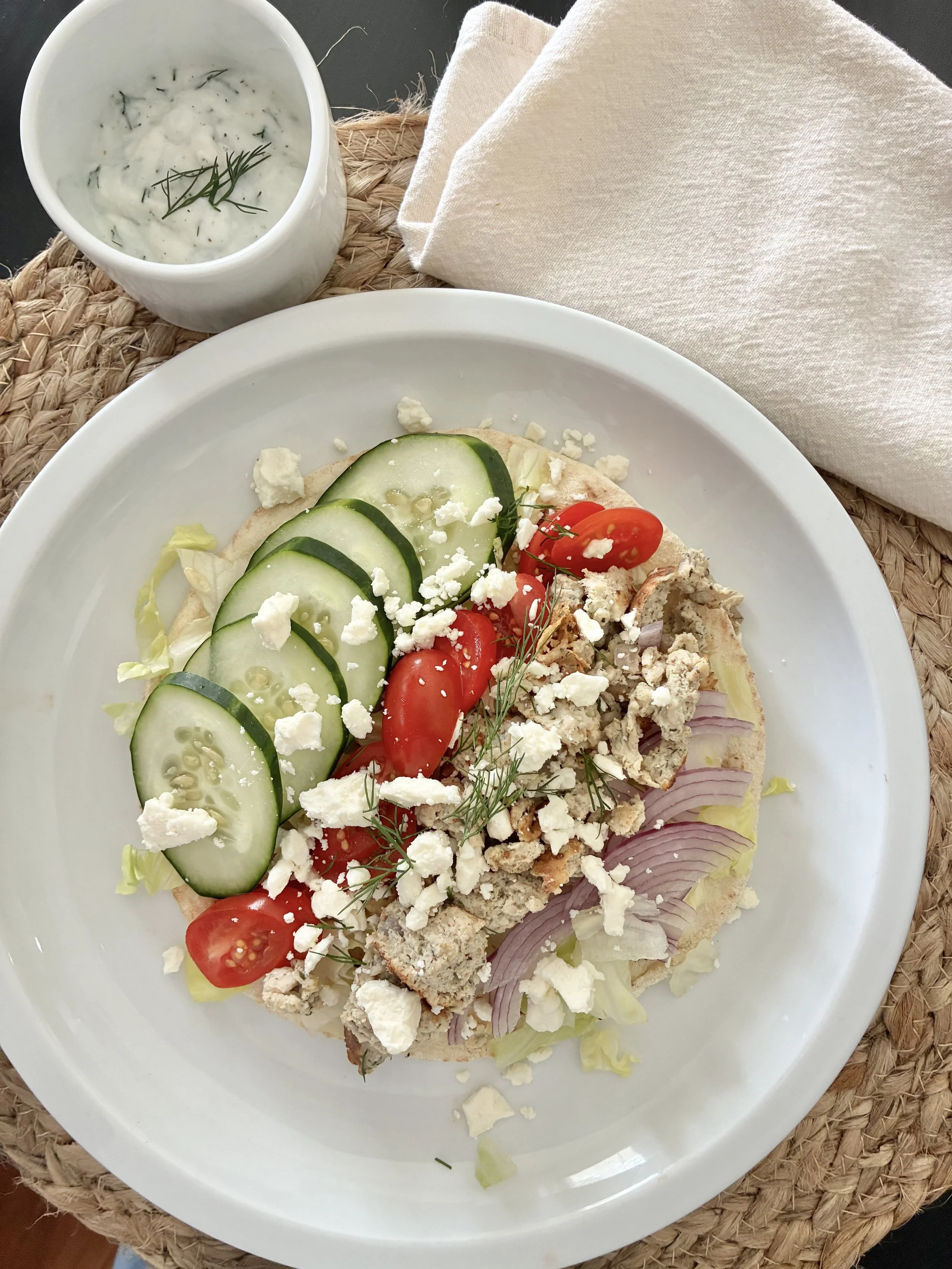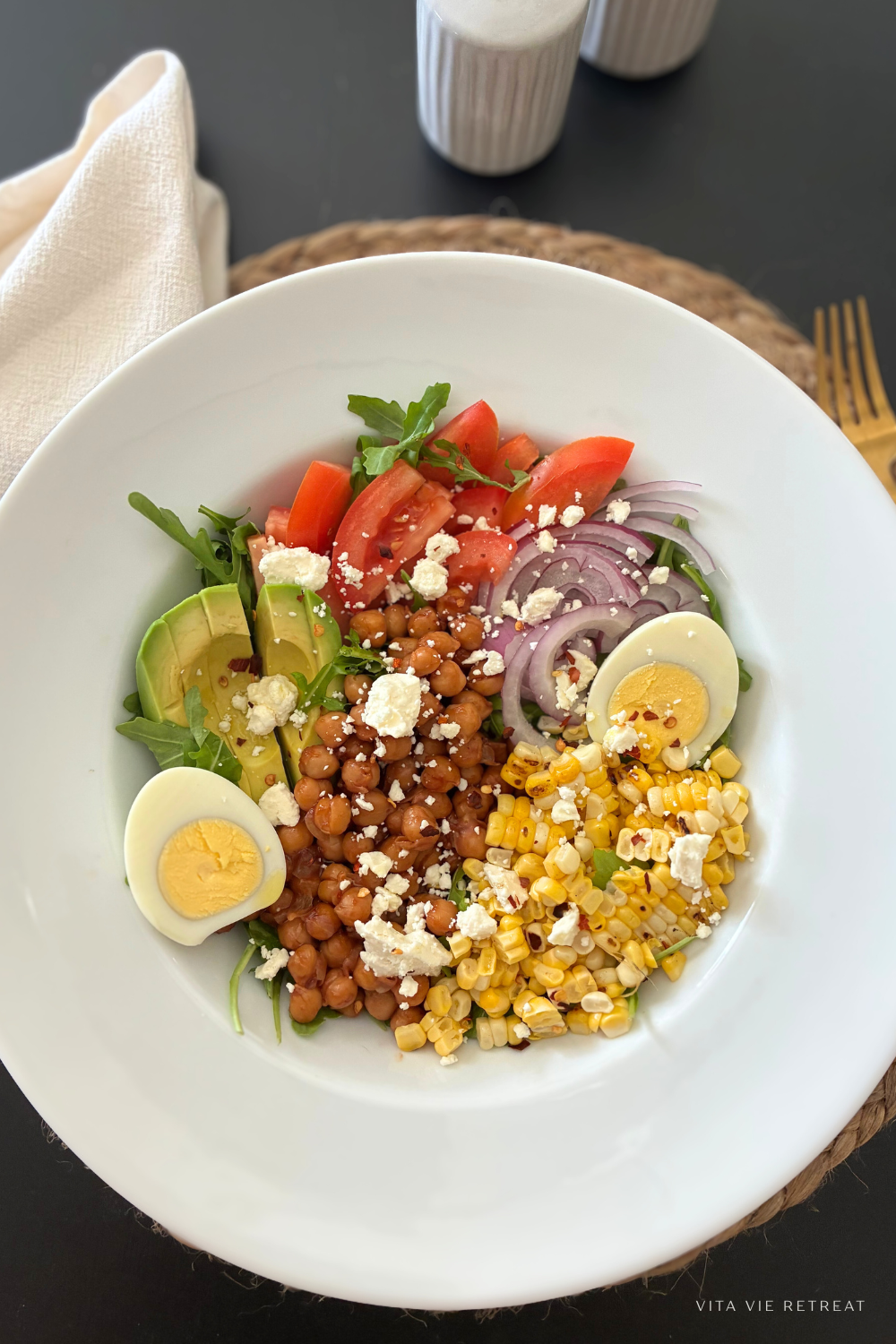How the Mediterranean Diet Supports Healthy Blood Sugar (Even If You’re Not Diabetic)
/Why Blood Sugar Balance Matters More Than You Think
Blood sugar is something that can impact health greatly. It’s a topic that comes up at our wellness retreat on a weekly basis. Even if you’re not diabetic or prediabetic, blood sugar regulation plays a key role in your everyday health. From your energy levels and focus to your cravings and sleep, your blood sugar impacts how you feel — and how your body functions.
Blood sugar (or blood glucose) refers to the amount of sugar circulating in your bloodstream, primarily coming from the carbohydrates you eat. When it's stable, you feel more energized, focused, and in control. When it's on a roller coaster — spiking and crashing — you might feel fatigued, irritable, ravenous, or foggy.
Over time, poor blood sugar regulation can contribute to insulin resistance, weight gain, increased inflammation, and eventually prediabetes or type 2 diabetes. The good news? You don’t need a diagnosis to start supporting your blood sugar — and the Mediterranean Diet offers a natural, sustainable way to do just that.
1. Why the Mediterranean Diet Is Naturally Blood Sugar-Friendly
The Mediterranean Diet isn’t a trend — it’s a long-standing, culturally rich way of eating that focuses on whole, nutrient-dense foods in a balanced, sustainable way. It helps blood sugar regulation thanks to:
Plenty of fiber from vegetables, fruits, legumes, and whole grains — which slows digestion and prevents sharp blood sugar spikes
Healthy fats (like olive oil, nuts, seeds, and avocado) that increase satiety and help with nutrient absorption
Lean protein from fish, legumes, poultry, and dairy to balance meals and reduce glycemic impact
Minimal added sugar and refined carbs, which often drive blood sugar highs and subsequent crashes
The Mediterranean Diet naturally emphasizes quality over quantity, prioritizing fresh, real food in a way that supports metabolic health without being restrictive.
2. What Blood Sugar Imbalance Looks Like (Even If You're Not Diabetic)
You don’t need a glucose monitor to notice the signs that your blood sugar might be on a roller coaster. Here are some common clues:
You crash or feel sleepy after a carb-heavy meal
You get hangry or shaky if you don’t eat for a few hours
You crave sweets or carbs in the afternoon or evening
You experience brain fog or mood swings after eating
You feel constantly hungry, even shortly after eating
These symptoms often improve when meals include fiber, healthy fat, and protein — all key components of a Mediterranean-style meal.
3. Beyond Food: Movement and Hydration for Blood Sugar Support
Blood sugar balance isn’t just about what’s on your plate — it’s about your daily lifestyle. Two powerful, underrated tools:
MOVEMENT
A brisk walk after meals can help your body use glucose more efficiently and improve insulin sensitivity.
Regular movement (even 10–15 minutes a few times a day) lowers the blood sugar impact of your meals.
You don’t need intense exercise — consistency is more important than intensity.
HYDRATION
Staying hydrated helps your kidneys flush excess sugar from the bloodstream.
Mild dehydration can mimic hunger, lead to cravings, and make blood sugar regulation harder.
Aim for at least half your body weight in ounces of water daily, more if you’re active or live in a warm climate.
4. Pay Attention to How Your Body Feels After Meals
One of the best things you can do is tune in. Everyone processes food a little differently, and your personal response matters more than a food label.
Ask yourself:
Does this meal leave me full for 3–4 hours?
Do I feel energized or sluggish afterward?
Am I reaching for sugar or snacks an hour later?
Keep an eye on meals that are carb-heavy without enough protein or fat — like a bagel with jam or a bowl of plain pasta. These are often the ones that cause the biggest crashes.
5. Sample 1-Day Mediterranean Plan for Blood Sugar Balance
Breakfast
Greek yogurt with a handful of berries, 1 tbsp chia seeds, and a sprinkle of almonds
Optional: small drizzle of honey or cinnamon for flavor
Lunch
Lentil salad with grilled chicken, olive oil, chopped cucumbers, tomatoes, red onion, and fresh parsley
Add a slice of whole grain bread if desired
Snack
Hummus with raw veggies or a boiled egg with a few olives
Dinner
Grilled salmon with roasted sweet potato and sautéed spinach in olive oil
Side of lemon-dressed arugula salad
Post-dinner:
Take a 10- to 15-minute walk to support digestion and glucose response
Want more ideas and inspiration? Get our Mediterranean Diet Recipe Bundle + Meal Plans
Balance Over Perfection
Blood sugar regulation doesn’t require perfection or extreme dieting. It’s about building balanced, satisfying meals, staying active, staying hydrated, and paying attention to how your body feels. The Mediterranean Diet supports all of these with ease.
Whether you’re focused on energy, weight loss, or preventing chronic disease, this way of eating can support your goals — and make every meal feel like a celebration of wellness.
Keep Going: More to Explore
Want to dive in deeper? Here are a few resources to keep the momentum going:
📌 Related Posts
✓ Done-for-You Guides
50 Anti-Inflammatory Meals → done-for-you recipe bundle
Mediterranean Diet Refresh → fully guided program with meal plans, gut health, weight loss guidance and more
The Wellness Shop → view our full list of weight loss programs, recipes guides, journals & tools
SAY HELLO TO YOUR NEW PARTNER IN HEALTH & WELLNESS: THE MEDITERRANEAN DIET
Take the Guesswork Out of Health & Weight Loss with the Mediterranean Diet Blueprint
Transitioning to the Mediterranean Diet can feel overwhelming, but it doesn’t have to be. That’s why we created the Mediterranean Diet Blueprint!
This comprehensive guide includes:
9 Week guided Mediterranean Diet experience
Done for you meal plans
Over 200+ recipes
Grocery shopping lists + meal prep tips
50+ Healthy Snacks
50 One Pot, One Pan Mediterranean Recipes
Tips for customizing the diet to fit your lifestyle
Time-saving strategies for meal prep and planning
Energy balance + biofeedback
Wellness & Nutrition Guides






















